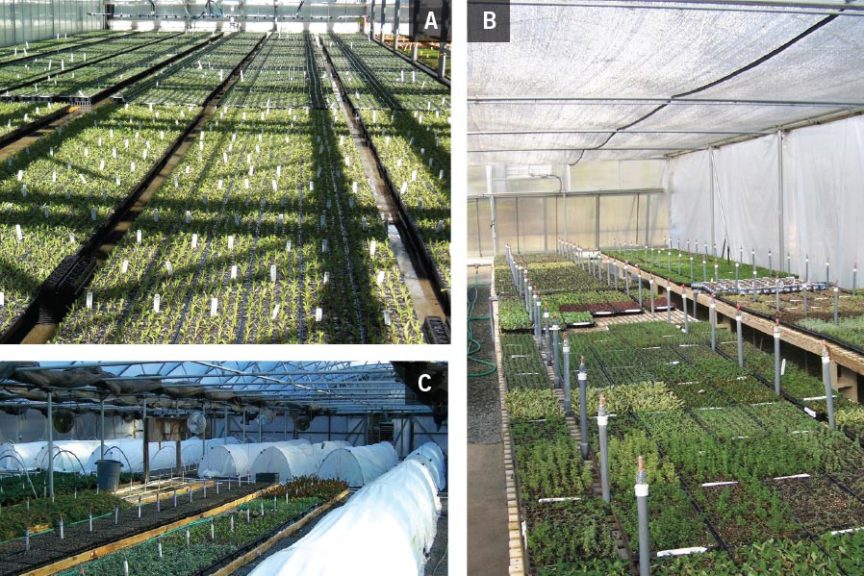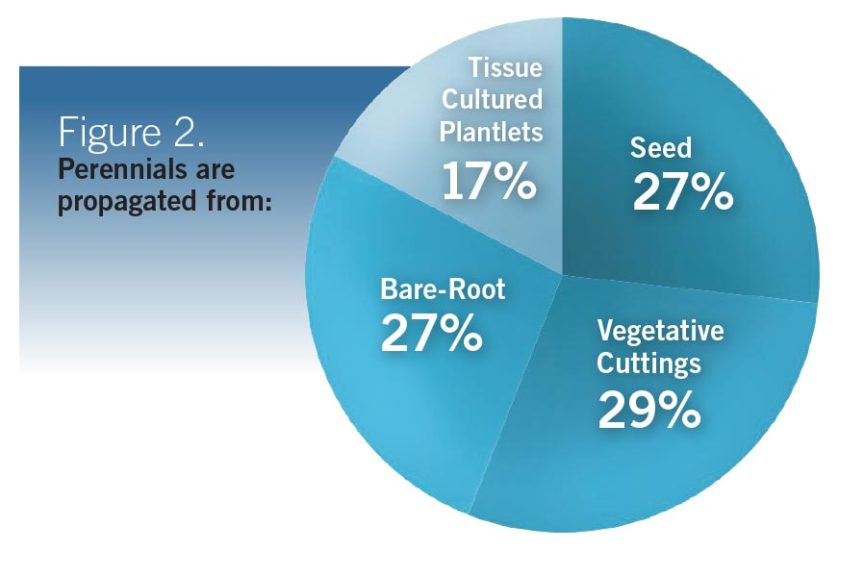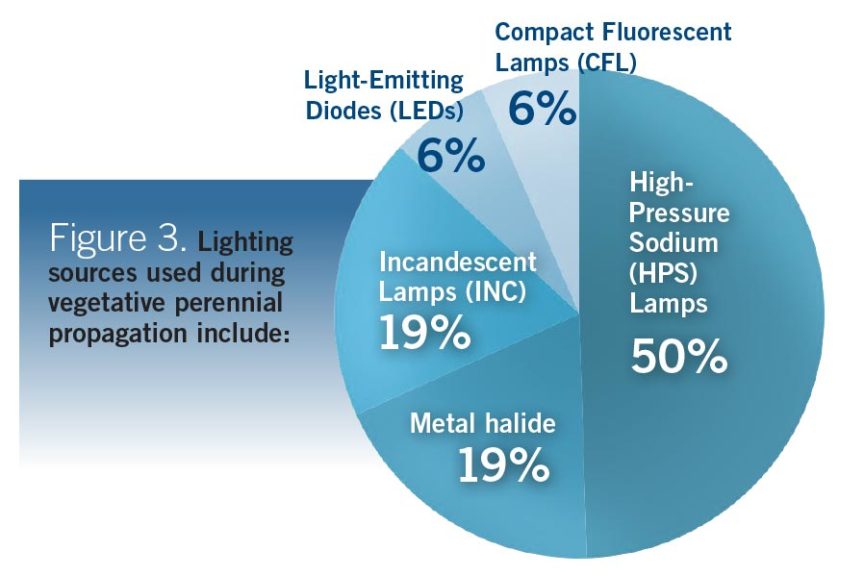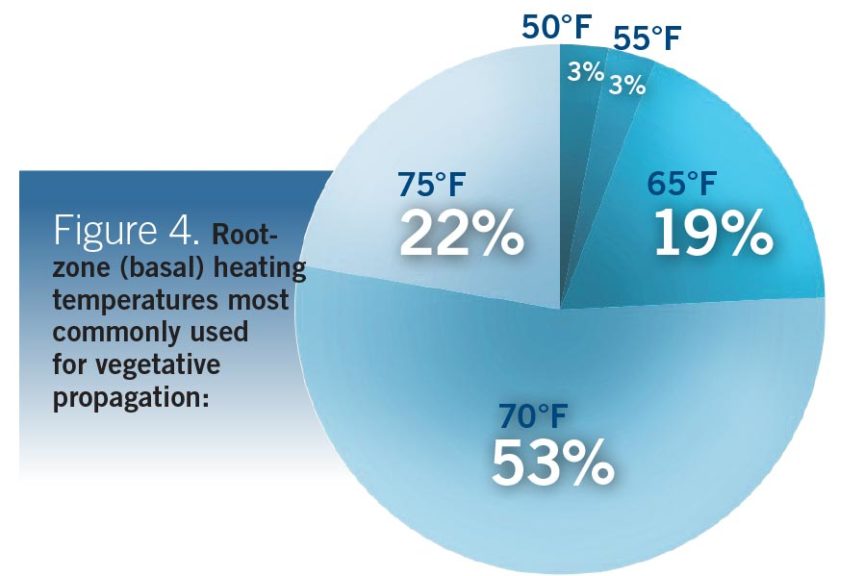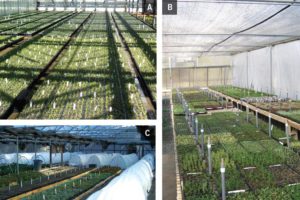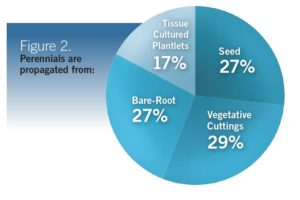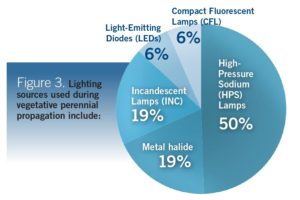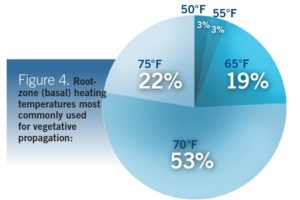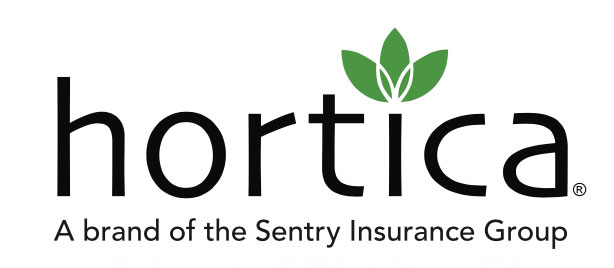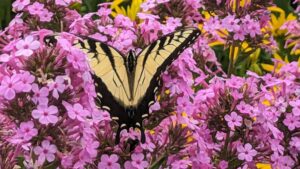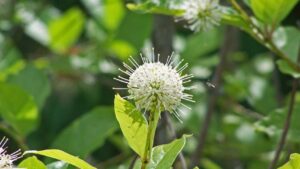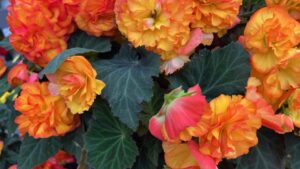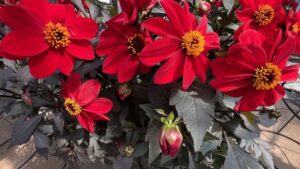Perennial Propagators’ Successes And Challenges: Results Of A National Survey
Herbaceous perennials are an increasingly valuable sector of the commercial bedding and garden plant market. In 2015, herbaceous perennials were the second largest (31%) segment, with a reported wholesale value of $571 million (USDA Floriculture Crops 2015 Summary). To produce the various perennials available on the market in large quantities, propagators must start these plants from seed, crown divisions, rhizomes, vegetative cuttings, or from tissue-cultured plantlets. Vegetative shoot-tip cutting propagation is the most common method used by the ornamental industry and offers the ability to quickly and economically produce large numbers of rooted cuttings (liners).
Compared to annual bedding plants, herbaceous perennials are most often rooted from early spring to late fall under seasonal daily light integrals (DLIs) and temperatures, thus posing a challenge for propagators to provide optimal and consistent environmental conditions to promote uniform callusing and rooting (Figures 1, 2, and 3, see slideshow). Additionally, when space is limited, propagators are challenged with growing a wide range of perennial genera at different stages of callusing and rooting under one environment. This causes a snowball effect in which propagators must maintain proper cultural practices and consistent environmental conditions during callusing and rooting.
Researchers at Purdue University and Michigan State University, in collaboration with Greenhouse Grower, conducted a survey to determine which cultural practices, environmental conditions, and callusing and rooting challenges are common among perennial propagators and growers.
Survey Methodology
Almost half (49%) of the respondents to the Perennial Propagation Survey by researchers at Purdue University, Michigan State University, in cooperation with Greenhouse Grower, said they were wholesale growers, 36% are grower-retailers, and 27% are propagators. While the majority of the U.S. respondents were located in the Midwest (40%), respondents also represented the Northeast (19%), Southeast (11%), Northwest (11%), Southwest (4%), West (7%), and 9% of the respondents were outside the U.S. Propagators and growers with 99,999 or fewer square feet of greenhouse or nursery space provided the largest number of responses (51%). The next largest group with 100,000 to 399,999 square feet of production space accounted for 31%, while production facilities with more than 400,000 square feet represented 19% of the respondents.
Perennial Propagation
Slightly more than 80% of the respondents indicated that they propagate more than 20 species of perennials either from seed (27%), vegetative cuttings (29%), bare-root (27%), or from tissue-cultured plantlets (17%) (Figure 2, see slideshow). Respondents who propagate perennials from vegetative cuttings indicated the top 10 perennial genera commonly propagated from vegetative cuttings (See “Top 10 Perennial Genera Commonly Propagated From Vegetative Cuttings” sidebar on page 2). Coincidentally, when propagators were asked to specify the most difficult-to-callus and/or -root perennials from vegetative cuttings, 60% of the perennials that made the top 10 list were on the top 10 most difficult list.
Vegetative Perennial Propagators Address Challenges
The majority of the respondents specified that perennial propagation at their facilities occurs during the summer (39%), but also during spring (29%), fall (18%), and winter (14%) months. During callusing and rooting of more than 20 genera of herbaceous perennials and under different seasonal greenhouse conditions, propagators expressed that they run into cultural and environmental challenges. Therefore, we asked propagators and growers to designate where they would spend $1,000 to improve the success of callusing and rooting of vegetative perennial cuttings. On average, 22% of the respondents would spend $244 to improve root and shoot growth and development; 11% would spend $282 to improve rooting success of cuttings that root poorly; and 11% would spend $263 to improve plant material. Respondents also indicated they would spend $100 (14%) to have access to cultural and environmental information.
In terms of cultural practices, 10% of the respondents would spend $124 to improve disease and pest management, 10% would spend $135 to improve irrigation, and 8% would spend $103 for improved fertility information and management. When it came to improving the propagation environment, 14% of the respondents were willing to spend $88 to improve lighting and temperature. Fortunately, root and shoot growth and development is driven by light and temperature; therefore, investing $332 to $370 in lighting and temperature technologies, control, and management would result in improved rooting success and root and shoot growth and development, and could potentially hasten production.
Perennial Propagation Environment
Light. When propagating perennials, 45% of the respondents indicated they do not use supplemental lighting, while 55% of the propagators who do provide cuttings with supplemental light use high-pressure sodium (HPS) lamps (50%) or metal halide (MH) lamps (19%), or light-emitting diode (LED) (6%), and compact florescent (CFL) (6%), or incandescent (INC) lamps (19%) for photoperiodic lighting (Figure 3, see slideshow). Respondents who used supplemental or day-extension lighting reported they provide either a 10-hour (24%), 12-hour (17%), 14-hour (38%), or 16-hour (21%) photoperiod.
Temperature. On average, 62% of the respondents specified they implement root-zone (bottom) heating when propagating perennial cuttings. The most common root-zone heating temperature used among perennial propagators is 70°F (53%); however, 19% and 22% of the respondents said they use root-zone heating temperatures of 65°F or 75°F, respectively (Figure 4, see slideshow). Additionally, few respondents reported using as low as 50°F (3%) and 55°F (3%) root-zone heating temperatures.
Perennial Propagation Cultural Practices
Rooting hormone. Propagators were asked if they use a rooting hormone to assist in rooting vegetative perennial cuttings. Results show that 35% use a powder rooting hormone; 47% use a liquid rooting hormone; and 18% use a foliar rooting hormone applied through the mist.
Fertility. During perennial propagation, 37% of propagators apply mist using an intermittent mist system, while others use fog (16%), boom systems (26%), or mist cuttings by hand (21%). When misting cuttings, 57% of the respondents do not implement fertility into the mist delivered to the cuttings. However, 19% and 29% of the respondents begin a fertility program at 7 or 14 days, respectively, after sticking cuttings. The majority of the growers who implement fertility provide cuttings with 50 (47%) or 100 (33%) ppm Nitrogen (N). Additionally, 73% said they do not use slow or controlled release fertilizers.
Conclusion
As a follow-up to information collected from this survey, researchers at Purdue University and Michigan State University have started conducting research to address these environmental and cultural challenges and to increase the rooting success of those difficult-to-root perennials.
Top 10 Perennial Genera Commonly Propagated From Vegetative Cuttings
| Rank | Vegetative Perennial Genera |
| 1 | Phlox |
| 2 | Salvia |
| 3 | Sedum |
| 4 | Coreopsis |
| 5 | Heuchera |
| 6 | Lavandula |
| 7 | Nepeta |
| 8 | Leucanthemum |
| 9 | Monarda |
| 10 | Veronica |





